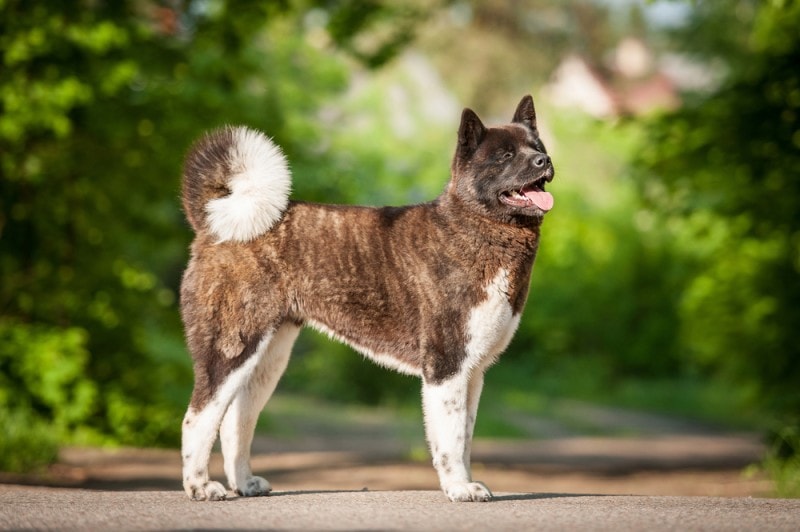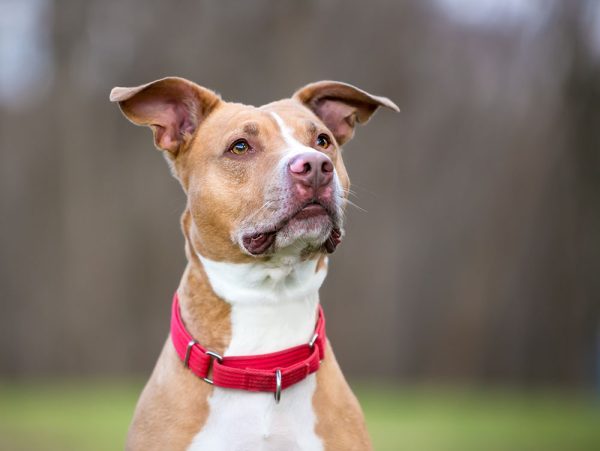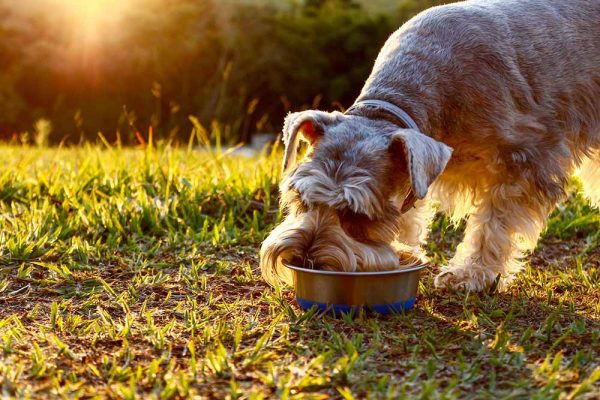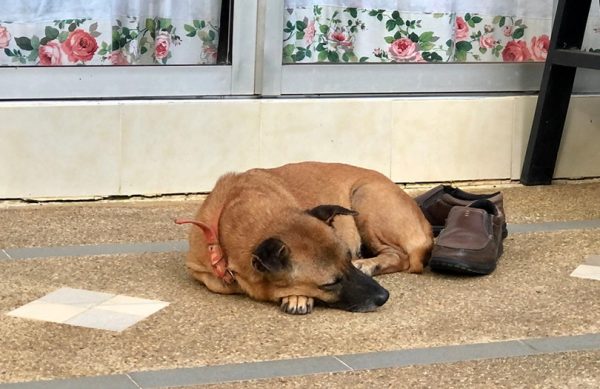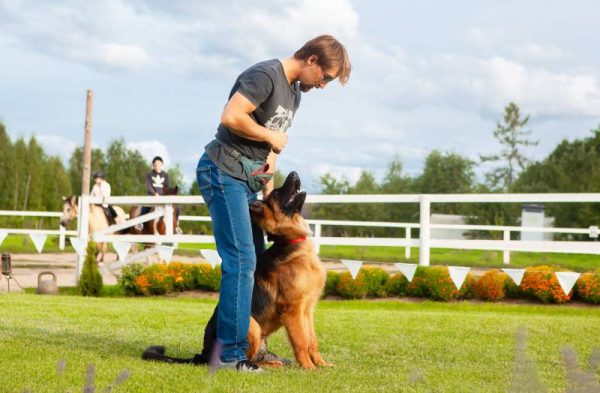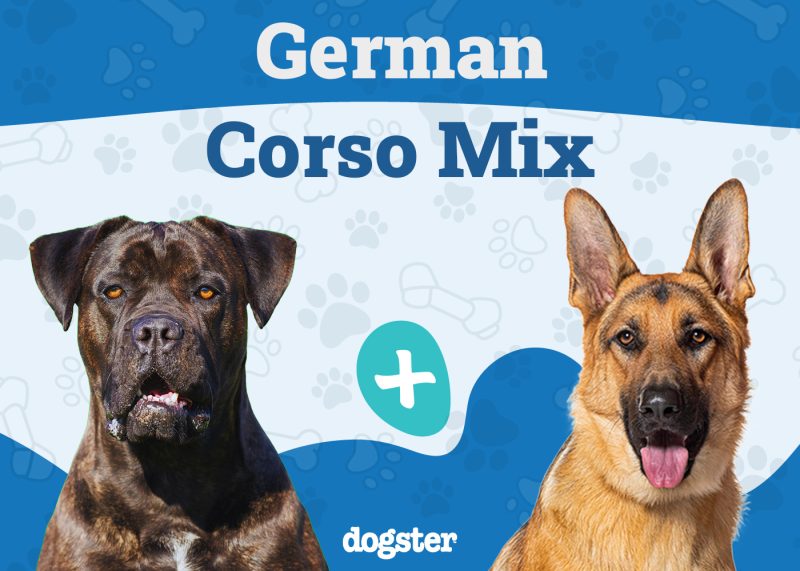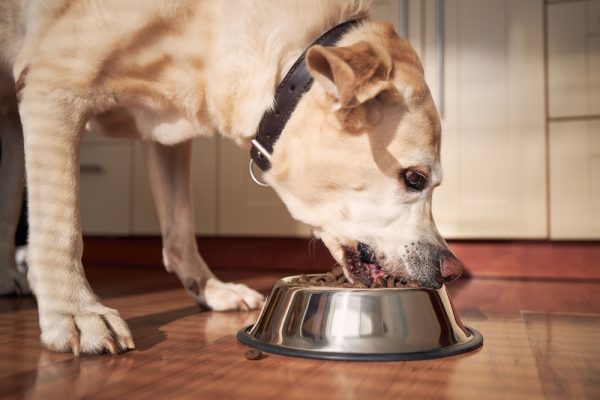Akitas are muscular and beautiful dogs known for their ancient Japanese lineage. They’re famous for their courage and loyalty and touted as fantastic family protectors. Whether you have an Akita yourself, are considering getting one, or are just curious about their fascinating history, you’ve come to the right place. The Akita were first used as guard dogs for royalty. We’re going to step back hundreds of years into the past to give you a glimpse into how the Akita came to be and provide a taste of what makes this breed so popular today.
Keep reading to learn everything you’ve ever wanted about the Akita dog breed.

Early Beginnings
Akitas are named after a province in northern Japan where most believe the breed originated. When the country’s fifth shogun, Tokugawa Tsunayoshi, rose into power in the late 1600s, he changed how society looked at this breed. He enacted laws that forbade the poor treatment of dogs and had a spot in his heart for the Akita breed. His laws declared that anyone who treats animals poorly would be either imprisoned or executed. During his reign, the Akita began to be put onto a high pedestal.
This was when Akitas began to be used as guards for the Japanese royalty. They also became the companions of the samurai, following them throughout their lives. Samurai trained their Akitas to be great at hunting fowl and larger game like bears and wild boar.
When the Meiji Restoration began in 1868, things started to shift for the Akita breed. Samurai warriors began to die out, and the interest in dogfighting picked up. Akitas were a very popular breed for the “sport” and the Japanese began crossbreeding them with other muscular and aggressive breeds so they were better suited for their fights.
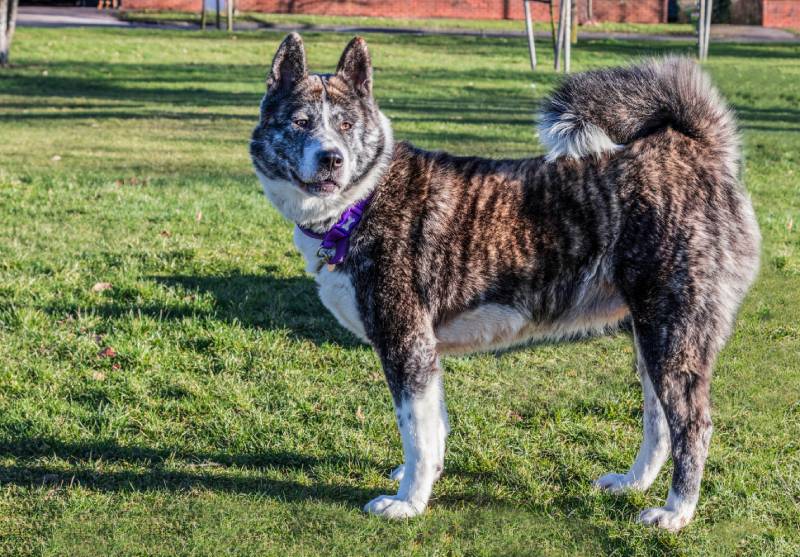
The Akita Restoration
The Akita Inu Hozonkai began in the Akita Prefecture in Japan in 1927. The AKIHO organization has two main goals in mind: to preserve the standard of the Akita breed and to forbid all crossbreeding.
The organization’s operations were put on hold during the Second World War, but by 1952, the organization transitioned to a public corporation foundation.
On the 50th anniversary of the AKIHO, Akita Inu Kaikan was built and established in commemoration. The first floor of the building acts as the headquarters for the organization, and there is a museum room on the third floor.
Today, there are over 50 branches of the organization, as well as overseas clubs throughout North America, Europe, and Russia.
The Japanese government made the Akita Inu a national monument in 1931, thanks to the efforts of the AKIHO. This declaration meant that the breed had become protected by Japanese law. This was the biggest step towards the revival of the breed.
The Most Revered Akita
Hachikō was a Japanese Akita that was born in 1923. He single-handedly helped push the Akita breed into the international spotlight. Hachikō belonged to a professor in Tokyo who commuted to work every day via the train system. Hachikō was so loyal to his owner that he would accompany him to and from the train station every day.
In 1925, Hachikō waited at the train station for his owner to return home, but he never got off the train. The professor suffered a brain hemorrhage while at work and died. Hachikō continued to wait for his owner to return, traveling to and from the station every day for nine years. While he allowed his master’s relatives to care for him, he never gave up his daily trek to the train station, hoping his owner would show up.
In 1934, a bronze statue of Hachikō was erected at the train station in his honor. Every year, on April 8, a remembrance ceremony occurs at the train station. Hachikō’s faithfulness to his owner symbolized loyalty, something the Japanese people valued greatly.

Akitas in the Wars
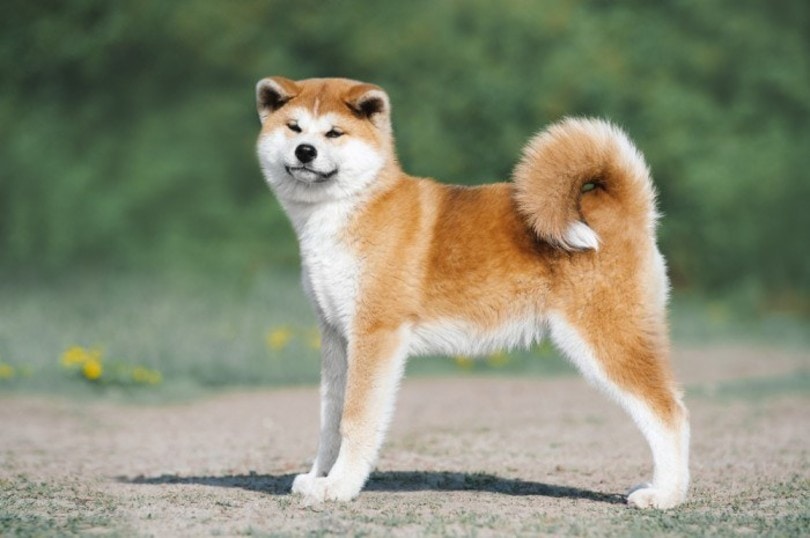
The Akita breed has been used in several wars throughout history. Akitas were used during the Russo-Japanese War in 1904 and 1905 to track prisoners of war as well as lost sailors.
During the Second World War, the Japanese government ordered all non-combat dogs to be destroyed. The military paid a hefty price for Akitas at this time as their thick and warm coats were used to line the uniforms of the military men and women. To prevent this from happening to their dogs, many Akita owners let their dogs loose, hoping that they might be able to survive better in the wild than at home. Other owners chose to crossbreed their Akitas with German Shepherds, a breed that earned immunity from the cull because of their important role in the military. Some Akitas were even used as scouts to alert soldiers of incoming enemies and guards throughout the war.
World War II pushed the breed to the brink of extinction. By the war’s end, only a very small number of Akitas were left. Two of the remaining Akitas were owned by a Mitsubishi engineer, Morie Sawataishi.
Sawataishi worked hard in post-war Japan to rebuild the Akita breed by planning litters and organizing dog shows.
Akitas in America
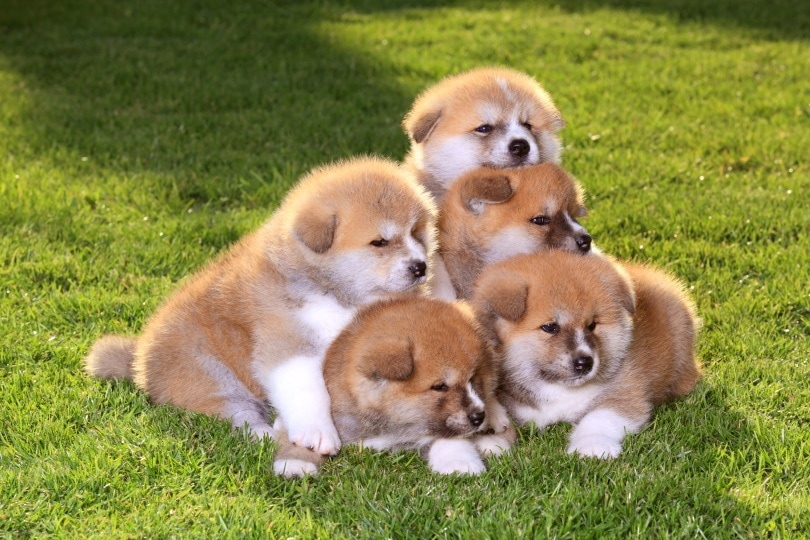
The first Akita to come to the United States came with Hellen Keller. She traveled to Japan in 1938 and was given an Akita to take home with her.
During World War II, American servicemen working as part of the occupation forces in Japan came into Akitas for the first time. These dogs impressed them so much that many of them chose to bring them back home to America with them.
Akitas started to become more popular in the United States, and Americans began breeding them to be larger, heavier-boned, and more intimidating than their Japanese counterparts. This is how the American Akita breed came to be. This breed differs from its Japanese cousin in several ways. They’re larger and come in many different colors. Many have a black mask on their face. Japanese Akitas, on the other hand, are smaller and lighter and are only allowed to be white, red, or brindle colored.
Akitas were recognized by the American Kennel Club until 1955, but the standard was not approved until 1972.

Conclusion
The history of the Akita breed is fascinating and full of ups and downs. From being treated like royalty to facing extinction to becoming a national monument, this breed seems to have seen it all. It is thanks to the dedication of Akita breeders throughout the world that we have this affectionate, loyal, and naturally protective breed to call our family members today.
Featured Image Credit: Rita_Kochmarjova, Shutterstock
